
Celebrating Africa’s Wild Babies

They are clumsy, incredibly cute, and curious about everything. Their ears and feet are too big for their bodies, and their large, inquisitive eyes seem to suck you right in. They have protective, doting parents that keep an eye on them 24/7 and will protect them no matter the cost. These are the incredibly adorable wild babies of Africa – guaranteed to put a smile on your face, whether it is while out on safari, or from the comfort of your home looking at photographs.
We are celebrating those delightful and captivating youngsters in this gallery, Celebrating Africa’s Wild Babies, which comprises of a selection of stunning photos, along with some interesting facts and thoughts from the photographers themselves. And they’re not just any photos; they’re some of the special photos submitted during our Photographer of the Year 2017 and 2018 competitions.

? “Innocence” in Mana Pools National Park, Zimbabwe © Dee Roelofsz (Photographer of the Year 2017 Entrant)
If you are ever stuck with identifying the species of an elephant, take a look at their ears. When an African elephant’s ears are stretched out, like this little guy here, you will see that they are shaped like the African continent. Meanwhile, Asian elephants have smaller ears, which are more rounded on top and flat along the bottom. An elephant’s ears act as a cooling mechanism to help keep the elephant from overheating.
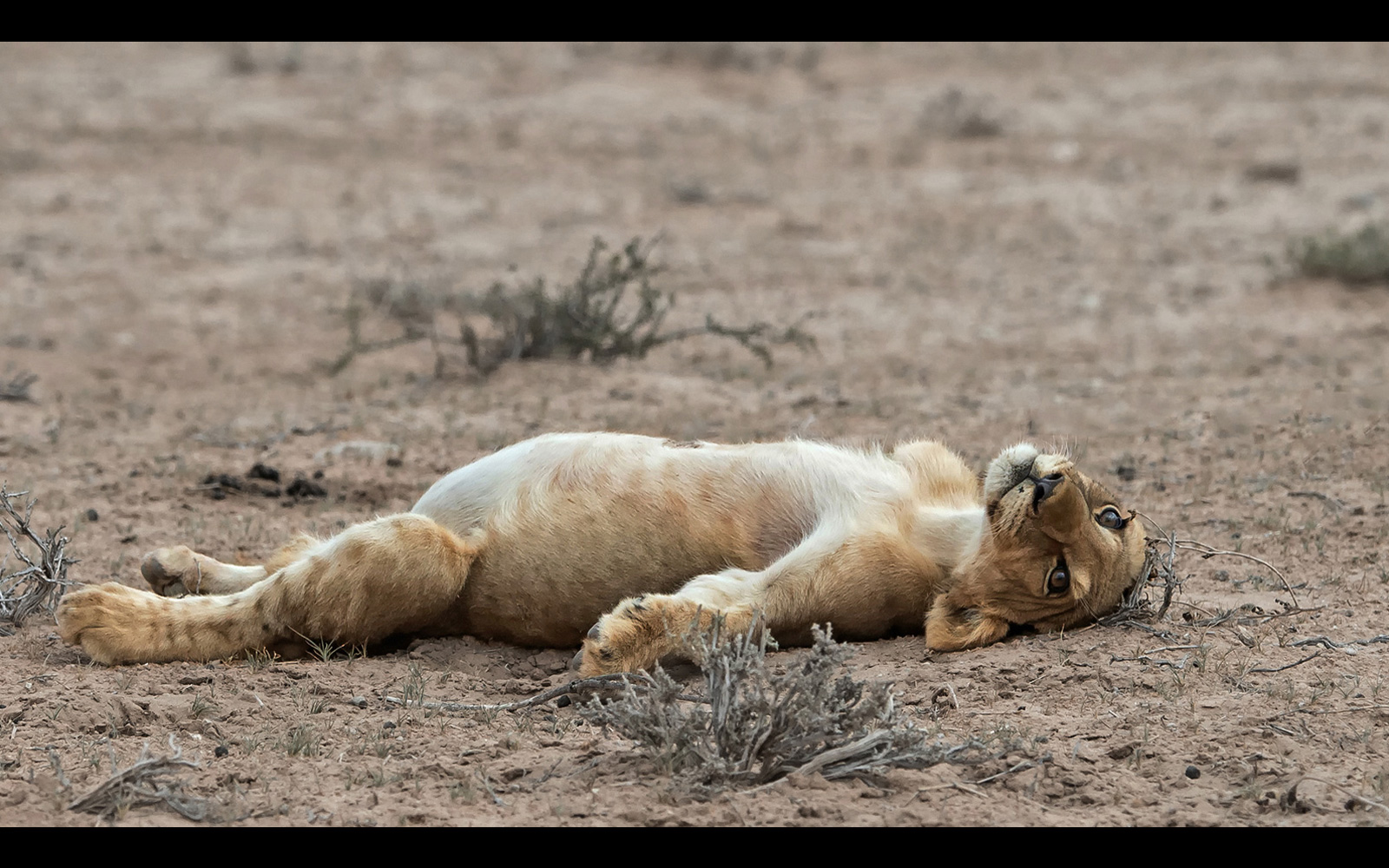
? “Too full to move!” in Kgalagadi Transfrontier Park, South Africa/Botswana © Johan J. Botha (Photographer of the Year 2017 Top 101)
“Photography at a kill can be very rewarding because of all the action and interaction. This was again the case at a lion kill of quite a big lion family of nine which included some cubs. All had enough to eat when all of a sudden this overfed lion cub just fell over on its back… looking at me!” ~ Johan J. Botha

? A mountain gorilla infant in Virunga National Park, DR Congo © Bobby-Jo Vial (Photographer of the Year 2018 Semi-finalist)
When born, a mountain gorilla baby weighs only 3-4 pounds (1.4 to 1.8 kg) and has enough strength to cling onto its mother’s fur. From the age of about four months, they ride their mother’s back and continue doing so through the first two or three years of their lives. As it can become quite cold in their mountainous habitat, mountain gorilla fur is much thicker and longer than the lowland subspecies who have short, fine hair.
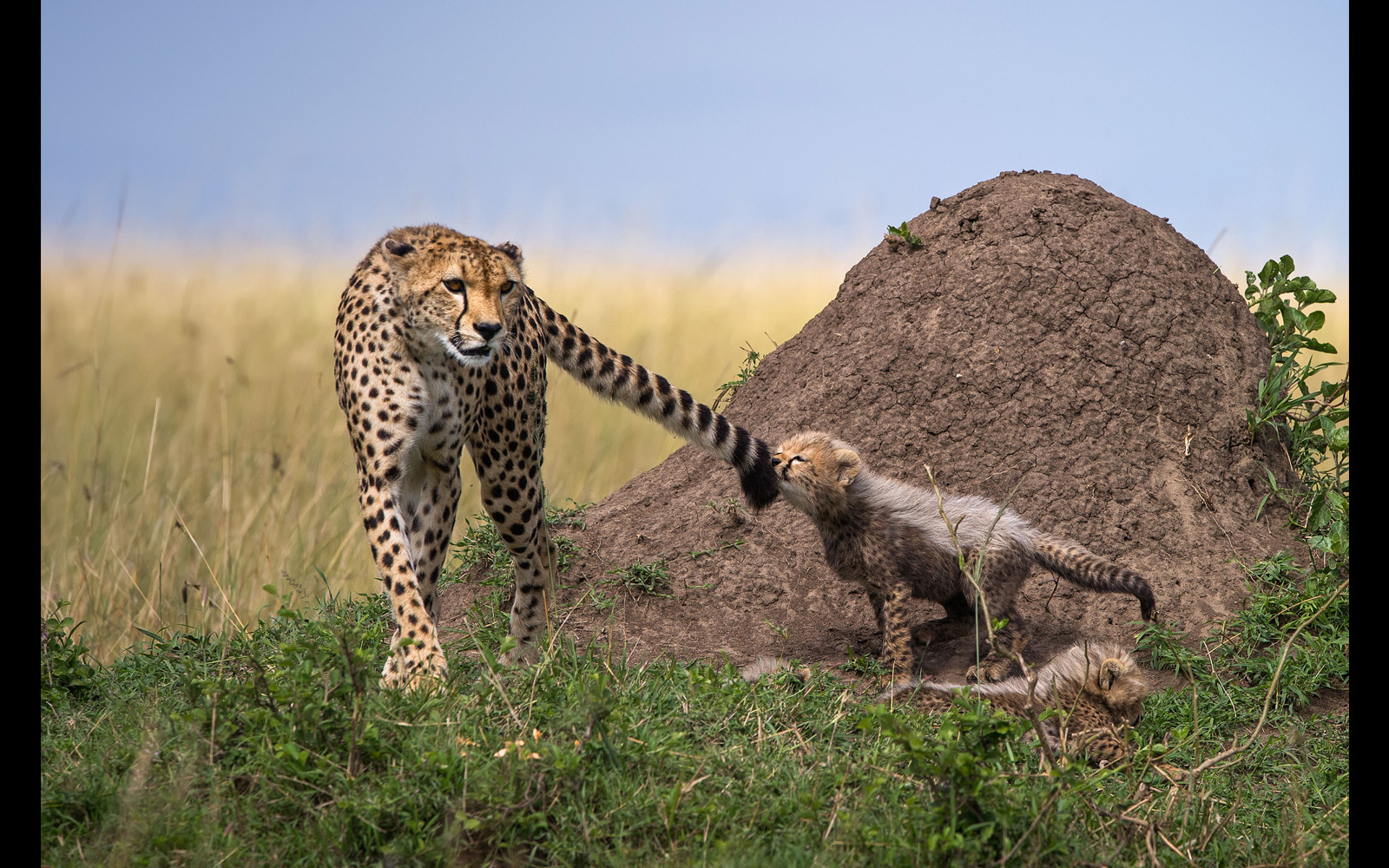
? “Don’t go!” – a cub grabs its mother’s tail as she begins to move off in Maasai Mara National Reserve, Kenya © Teresa Nel (Photographer of the Year 2018 Entrant)
“On a trip to the Maasai Mara, we came across this mother cheetah with two young cubs. The mother rested a bit with her cubs who just lay against the termite mound and did not interact with each other. After a while, the mother wanted to start moving again, presumably to look for food. As she got up, the one cub grabbed her tail as if to say ‘don’t go!’.” ~ Teresa Nel
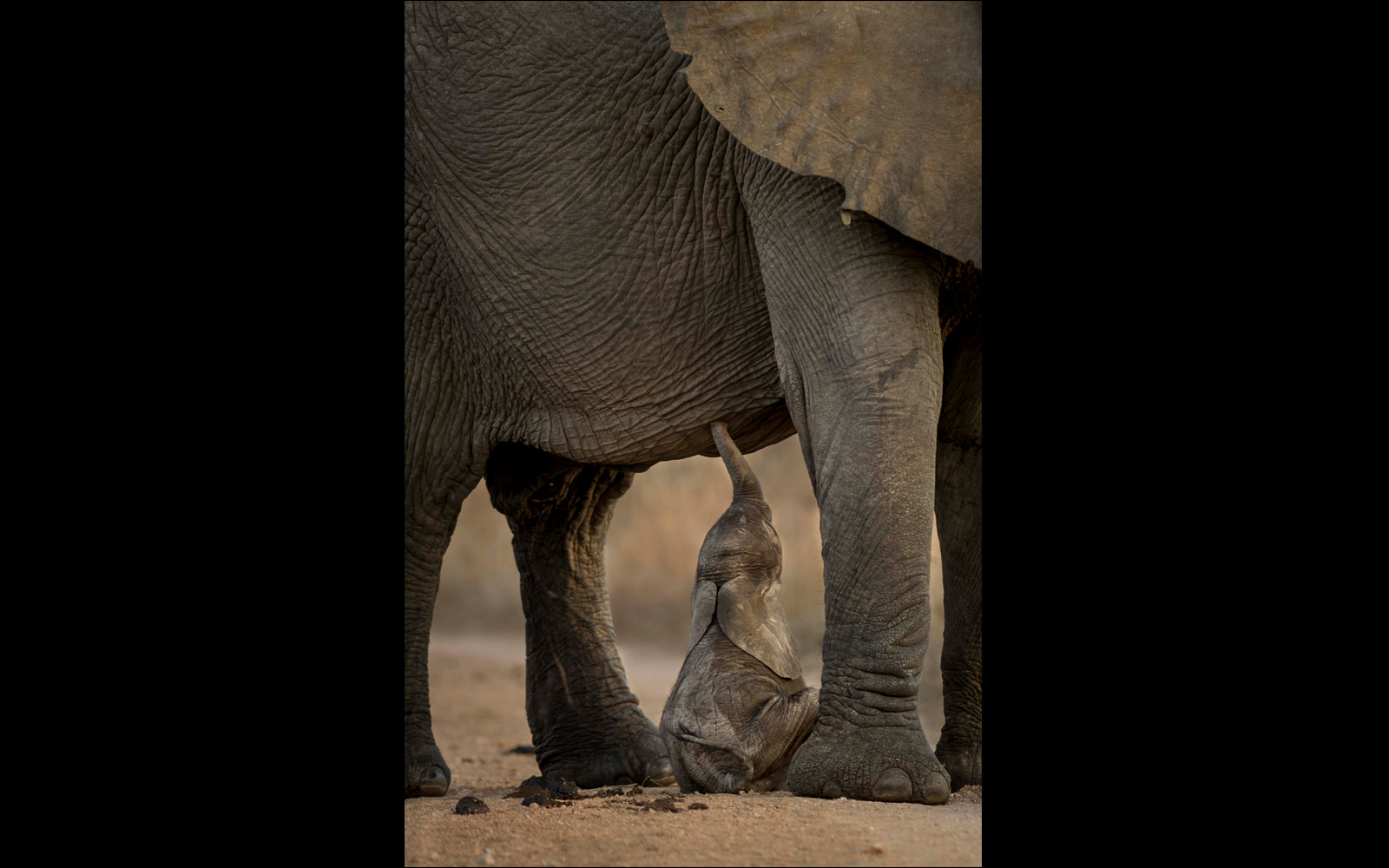
? “Wish, dream, hope” in Sabi Sand Game Reserve, South Africa © Ross Couper (Photographer of the Year 2017 Entrant)
Newborn elephants stay very close to their mothers as they are unsteady on their feet and require support. They rely on touch, smell, and hearing as their eyesight is poor for the first few days.

? “As light as a feather” in Kruger National Park, South Africa © Senka Gavrilovic (Photographer of the Year 2017 Finalist)
“One early morning, I spent a few hours at a hyena den sight in Kruger National Park being entertained by inquisitive cubs exploring the surrounding. One of the cubs discovered loose feathers on the ground, of which some ended up gently sticking on its nose after a sniff. The playful scene in front of me produced this soft and innocent moment that I was able to capture with my camera.” ~ Senka Gavrilovic

? “Innocence” in Sabi Sand Game Reserve, South Africa © Andrea Galli (Photographer of the Year 2017 Semi-finalist)
“It was one of those days in the bush – and this can happen in Sabi Sand – with no sightings all day long. Before the usual stop for a sunset drink, we came across this baby rhino and his mother. He was having fun chasing an oxpecker and running around like crazy, but suddenly froze when he saw us and tried to hide, looking for protection from his mother.” ~ Andrea Galli

? A wild dog pup in Zimanga Private Game Reserve, South Africa © Prelena Soma Owen (Photographer of the Year 2018 Entrant)
African wild dog pups are cared for by the entire pack. Once they are old enough to eat solid food, they are given priority at a kill (even over the dominant pair) and are allowed to eat first.
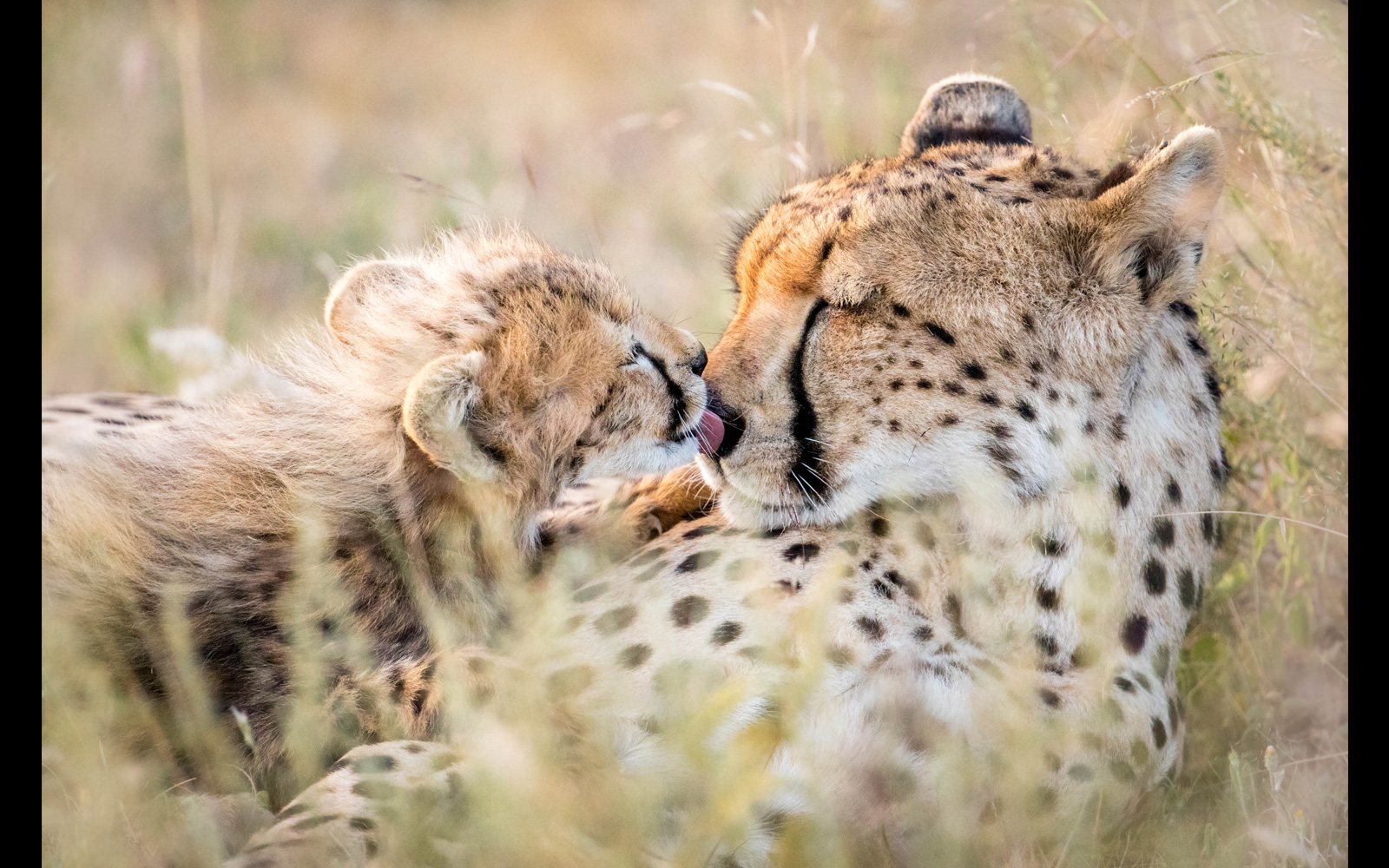
? “Cub love” in Serengeti National Park, Tanzania © Sarah Zito (Photographer of the Year 2018 Entrant)
“We had watched this valiant mother cheetah drag her springbok kill across the valley to a safer place while all of her three cubs played around, jumping on the kill, racing each other, and generally making nuisances of themselves! Once she got the kill to some cover, they fed, and she was finally able to have some rest. Then, one by one, all the cubs came up to her, expressing the deep affection and bonds between them with touching sweetness – like this cub licking her nose. It was truly something special to witness.” ~ Sarah Zito
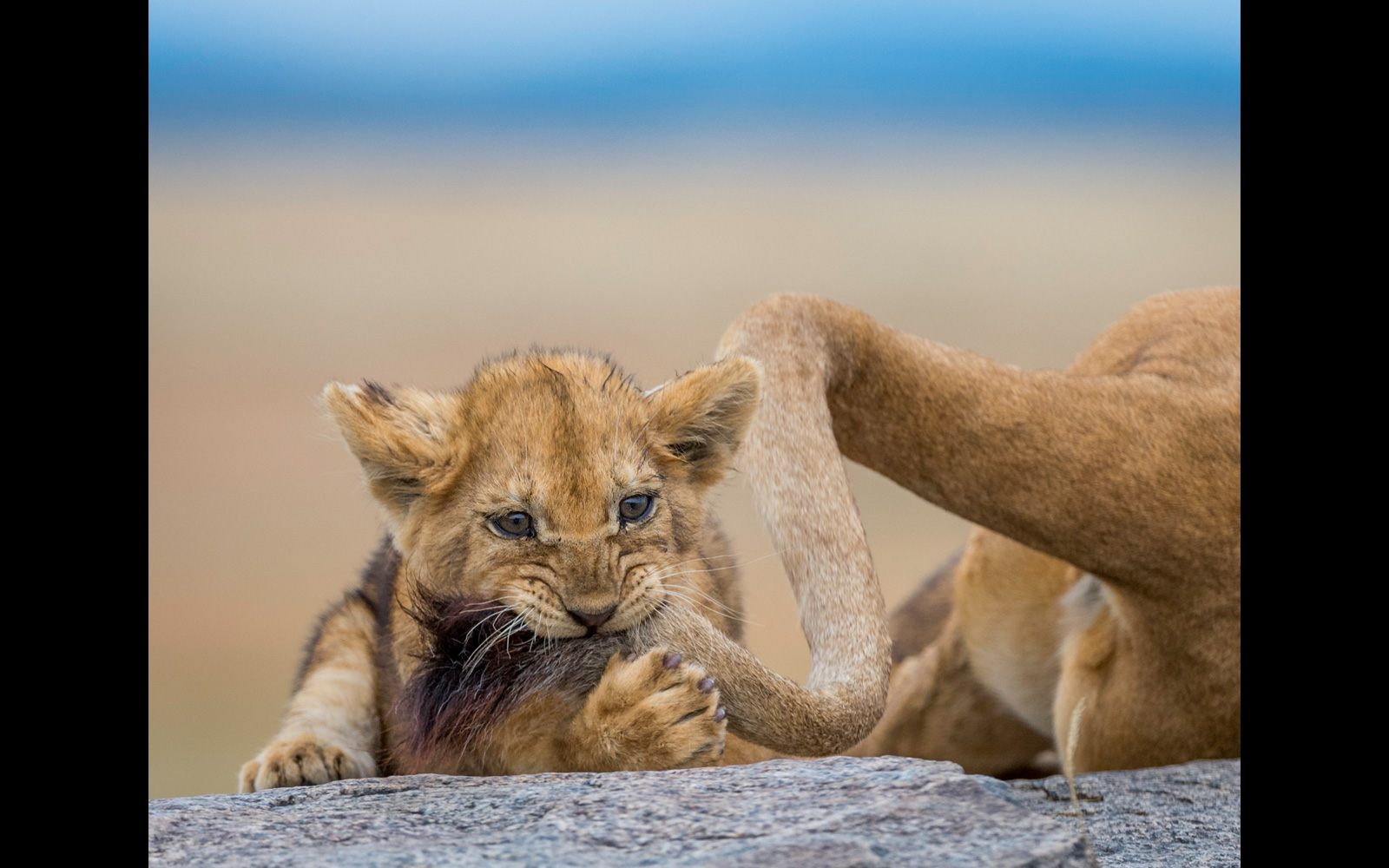
? “Caught the cat by the tail” – a lion cub in Serengeti National Park, Tanzania © Yaron Schmid (Photographer of the Year 2018 Entrant)
Lion cubs play with anything that arouses their interest, including their mother’s tail. Most of the time their play imitates behaviours they will use as adults, such as stalking and fighting. This is an important part of their development as playing will help the cubs learn these skills as well as help to form strong social bonds within the pride.

? Baboon youngsters play in Karongwe Private Game Reserve, South Africa © Johan J. Botha (Photographer of the Year 2018 Top 101)
Baboons are very sociable creatures and are often found grooming, feeding and playing together within a troop. They are also very vocal and have many hand and arm gestures that help with communication – this also includes very expressive faces!

? “Awwww Mom do I have to?” in Timbavati Game Reserve, South Africa © Andrew Schoeman (Photographer of the Year 2017 Top 101)
“A hyena mom had just arrived back from her night’s activities and was calling for her baby to come out of the den. A small black bundle came wobbling out, and the mother and pup enthusiastically greeted each other. After a few minutes, the mother decided it was time for the youngster to go back into the den, but the baby had other ideas, and it continually came back out to be with its mom. After about five minutes of this the mother firmly picked up her pup and put it back down the entrance hole of the den, the pup looked in our direction with a sad face that clearly said, ‘Awww Mom, do I have to?’.” ~ Andrea Schoeman
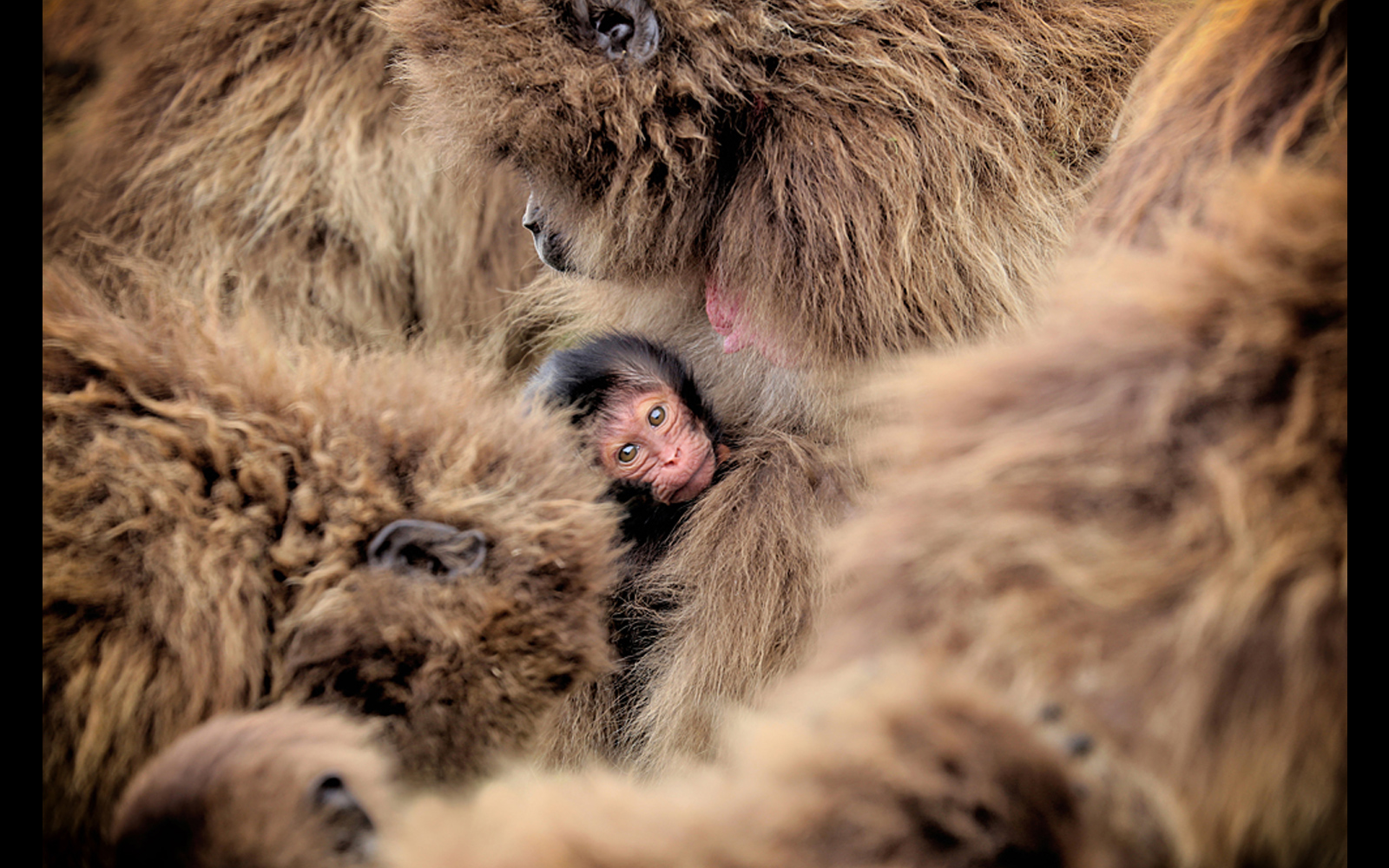
? A baby gelada in the Semien Mountains, Ethiopia © Paolo Maccarone (this primate is an Old World monkey within its own genus and is alternatively referred to as bleeding-heart monkey or gelada baboon) (Photographer of the Year 2018 Entrant)
“After a long, foggy day on the Semien Mountains, I finally saw a troop of geladas. My attention was immediately attracted by a baby gelada, safe and protected in the centre of the group.” ~ Paolo Maccarone
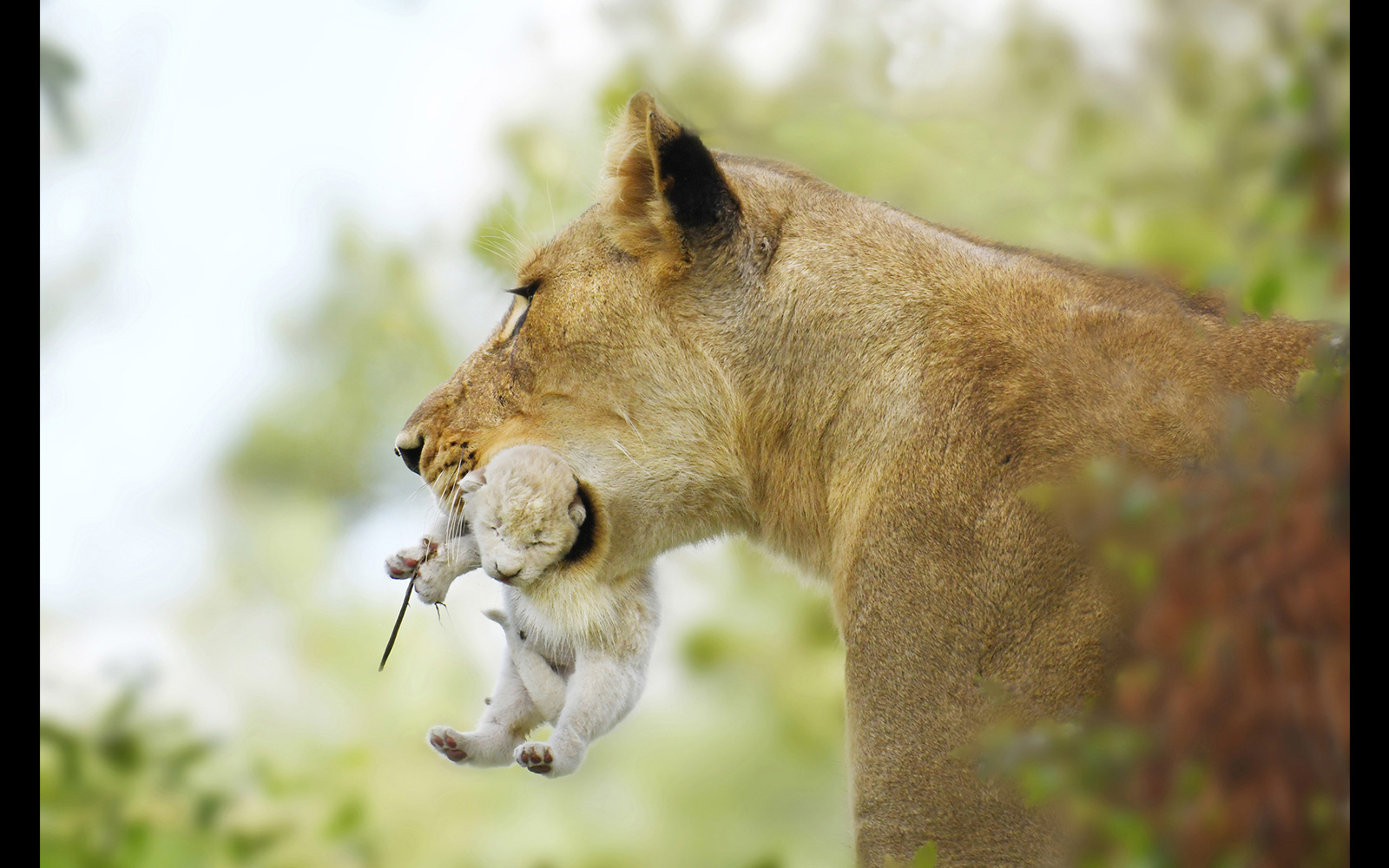
? A four-day-old white lion cub is carried by its mother in Ngala Private Game Reserve, South Africa © Daryl Dell (Instagram/daryldellsafaris) (Photographer of the Year 2018 Entrant)
White lions are technically leucistic, and not a separate species or subspecies. Leucism is where an animal does produce melanin (unlike albinos which produce no melanin), but the condition prevents melanin from being deposited in the fur, resulting in patches of white colouring in the fur.
To comment on this story: Login (or sign up) to our app here - it's a troll-free safe place 🙂.![]()




